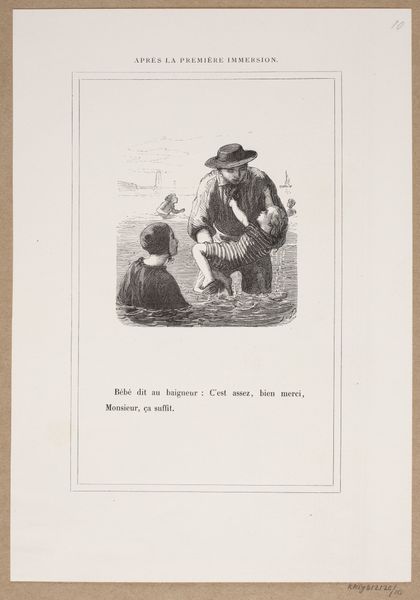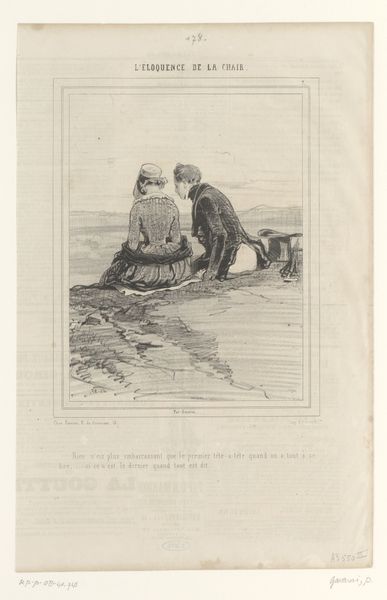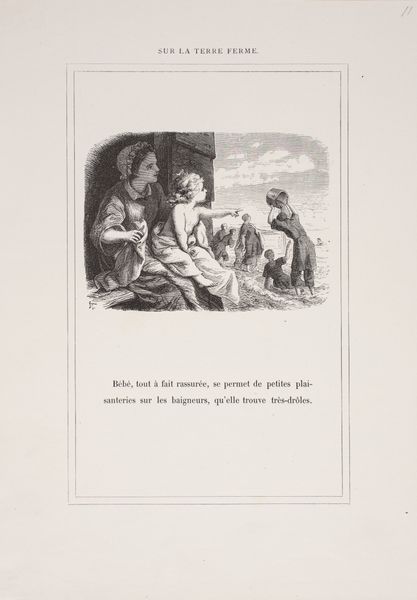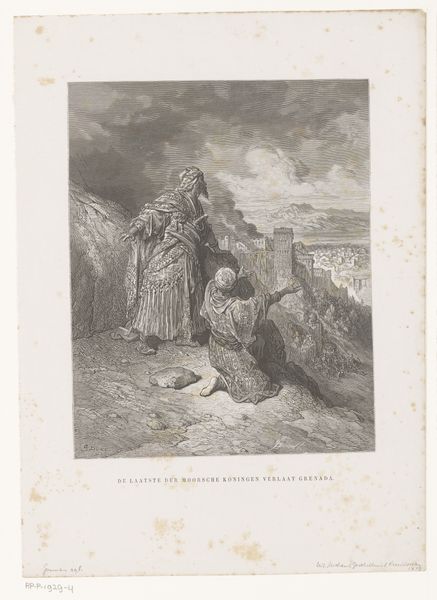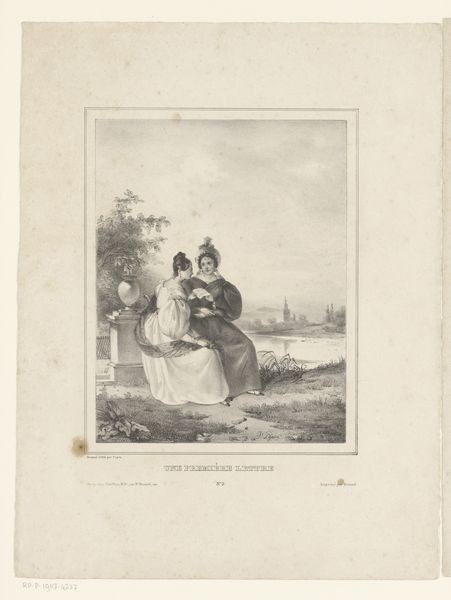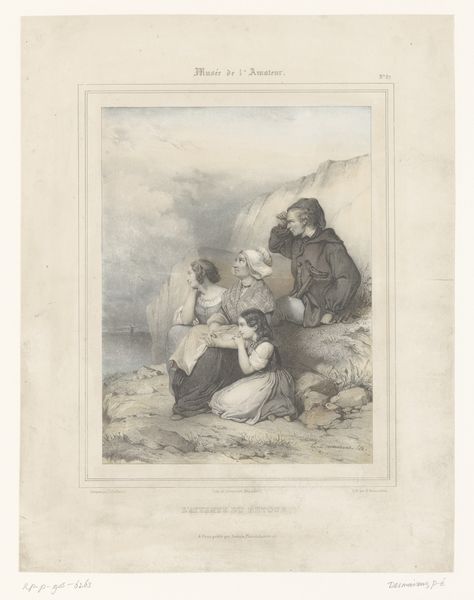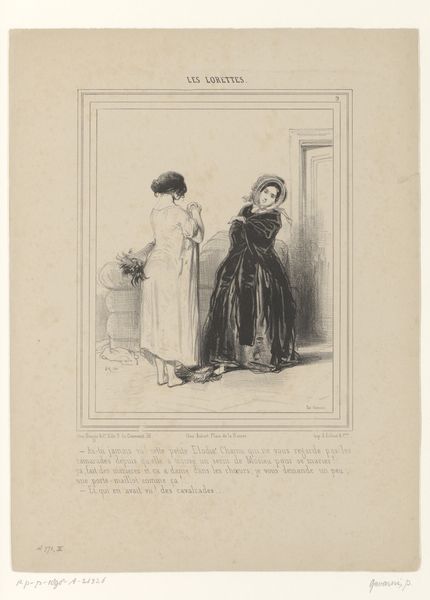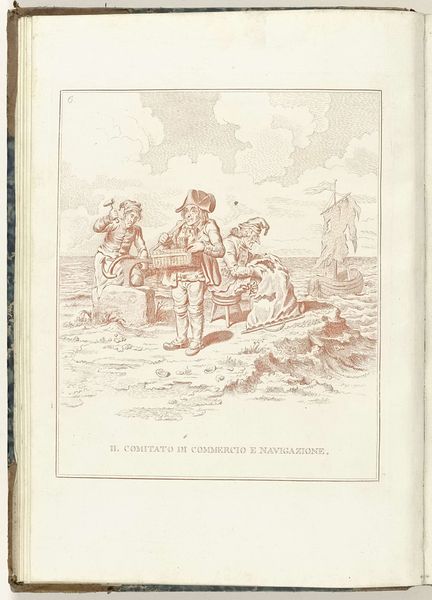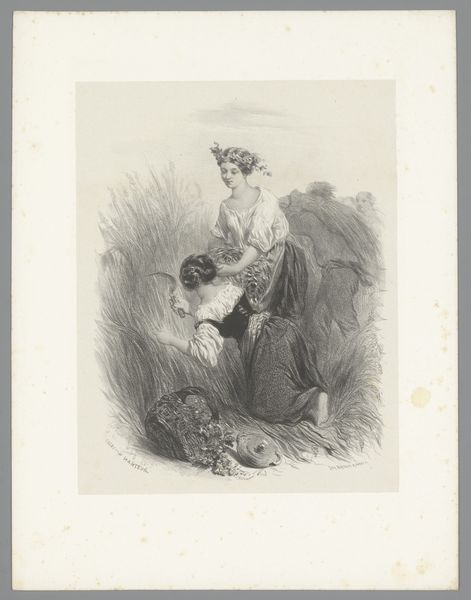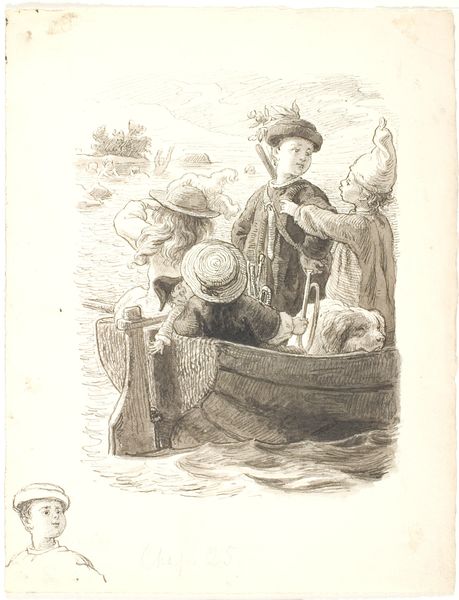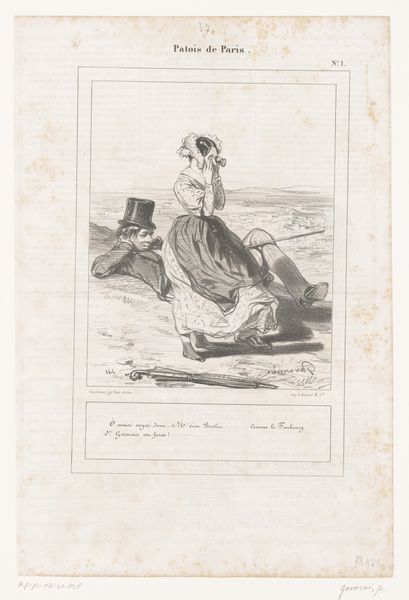
print, woodcut
# print
#
landscape
#
figuration
#
woodcut
#
genre-painting
Dimensions: 275 mm (height) x 190 mm (width) (bladmaal)
Curator: This is "Sur la plage," or "On the Beach," a woodcut by Louis Paul Pierre Dumont, created in 1863. It's currently part of the collection here at the Statens Museum for Kunst. Editor: There’s a beautiful stillness to this work; despite the likely windy beach setting, everything feels carefully composed and balanced. Curator: This piece speaks to the rise of seaside leisure in the mid-19th century and how that accessibility intersected with class. The two figures on the beach offer an interesting narrative about societal norms surrounding family, gender, and leisure time. We can analyze that even more with that quote beneath the image, detailing how the child expresses surprise and wonder about there being much water in the sea! Editor: I agree about the interesting interplay between nature and people! Focusing on the pure visuality, the meticulous detail in the woodcut is amazing: note how the different textures - the fabric, the waves, the clouds - are all created through nuanced lines and values. It has that incredible texture that only wood can really capture. Curator: Dumont's portrayal also invites examination into the position of women during this era, who, in general, were just coming into new understandings of leisure activities and childhood. Are they simply enjoying a day by the water, or is there perhaps a suggestion of labor, childcare, or social constraint underlying the surface? It opens avenues for reflection. Editor: And reflecting just upon their location—the composition is divided into distinct horizontal planes: the beach, the sea, the sky; with that single sailboat acting as an amazing vertical contrast that anchors the work. Curator: The subtle symbolism that emerges through the interplay of those elements invites viewers to consider those connections. It pushes us to question not only what’s presented but what remains unseen, hinting at power structures and personal histories inherent to depictions of seemingly mundane beach scenes during that specific moment in history. Editor: Precisely. Focusing back on form and closing out our brief observations here: the limited tonal range further enhances that work's overall pensive mood; inviting closer examination to the interplay between the light and shadow as it helps define volume of each depicted form.
Comments
No comments
Be the first to comment and join the conversation on the ultimate creative platform.
